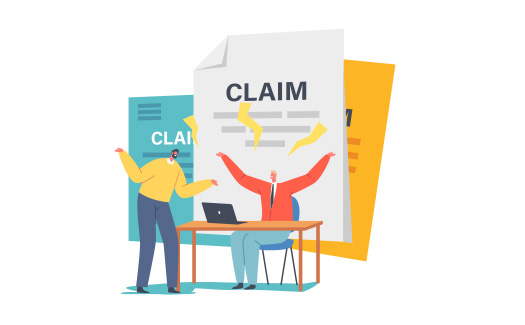While there’s no magical crystal ball for predicting future claims, data, combined with modern tech, is the next best thing. Thanks to data analytics, there’s no reason to wade into the future completely unaware of what lies ahead, especially when it comes to the kinds of insurance claims clients are likely to make. Here’s a breakdown of what’s involved in understanding and predicting insurance claim trends so you can enhance your risk management, ensure solvency, and maximize both profits and customer satisfaction.
Predicting Claims to Protect Profits
By predicting the kinds of claims that may be coming down the pike, an insurance company can identify key loss drivers and then use that data to prevent claims from eating away at its profits.
For example, suppose an insurer began providing cybersecurity coverage for both small-to-midsize businesses (SMBs) and enterprises four years ago. The amount the company has had to pay out via claims has steadily risen—and it’s gone up sharply over the last fiscal year.
Using that stat alone may result in a knee-jerk reaction: raising all premiums for all businesses that have a cyber rider. Even though this may be effective in reducing risk, it may also push some customers away toward less expensive options.
On the other hand, by analyzing claims trends, the company may be able to make a more informed decision.
For example, by analyzing claims data, the insurer may discover that the sharp rise in cyber claims has been consistently due to claims filed by smaller businesses, as opposed to larger enterprises. Upon further investigation, using RMIS software (risk management information system), the company learns that this is partially due to smaller organizations having less robust cybersecurity protections, such as relatively weak, traditional hardware firewalls instead of next-generation firewalls (NGFWs), a lack of web application firewalls to protect their cloud-based tools, and even free or outdated anti-virus software.
Attackers are going after smaller businesses because, even though the bounty may be smaller, their defenses are weaker.
With this information, the insurer can take one, or a combination, of the following steps:
- Require all clients to have a baseline selection of cybersecurity protections in place
- Increase the premiums for SMBs
- Create a tiered selection of insurance products, charging companies more if they have weaker cybersecurity
- Partner with a cybersecurity company and offer cybersecurity services to new and existing clients, perhaps at a reduced rate.
In this way, the insurer leverages data to reduce its risk and safeguard profits—while minimizing how much clients have to pay in premiums.
Predict the Kinds of Claims Policyholders May Make
By using claims data to predict the types of claims policyholders are likely to make, a company can:
- Decide how to properly allocate resources to handle future claims
- Streamline the claims process for clients
- Strike a balance between retaining and transferring risk by adjusting premiums according to the kinds of claims individual clients are likely to file
To illustrate, suppose an insurer provides property insurance to a significant number of corporate clients and homeowners in Florida. When deciding how to set premiums, a logical presumption may be to adjust up for flood-related damage, especially due to the prevalence of hurricanes.
While this makes perfect sense, the insurer decides to analyze its claims data to double-check the hypothesis. The data reveals a surprise: Year-over-year, the company actually pays out more money for hail damage than flooding. Upon closer examination of claims and weather data, they discover this is because of a combination of factors: the locations and topographical elevations of clients and the fact that there are more hail storms in Florida each year than hurricanes.
The insurer can then use this information to more accurately predict the proportion of hail- to hurricane-related claims—and for individual customers. This empowers the company to limit its risk by adjusting the costs of its products, as well as setting up systems that enable more efficient claims processes.
Optimize the Claims Process for Customers
When you understand and can predict claims trends, you can also lower another kind of risk: the risk of customers getting frustrated by the claims process. After an incident, the emotional toll and logistical challenges can be far more frustrating for a customer whose payout gets delayed. But if you use claims trends to predict the kinds of incidents customers may have to deal with, you can build the kind of operational infrastructure that makes things easy—for everyone involved.
For instance, suppose an insurer provides coverage for small businesses. Their claims data reveals that the most common kinds of claims for their clientele are burglary and theft. The data also shows that these kinds of claims rise in the summer and fall during the winter months.
Using this data, the insurer can take the following steps, all of which can streamline the payout process while reducing the risk of overpaying on claims:
- Train more adjusters regarding how to assess damages related to theft and burglary, which can speed up the payout process while boosting accuracy.
- Allocate more adjusters and support staff for managing burglary and theft claims during the summer months, which enables faster claims processing due to having more staff to handle each claim.
- Provide clients with free or low-cost security assessments, as well as security tips, to minimize the chances of them being taken advantage of by criminals. This can reduce the number of claims, freeing up staff to focus on the ones that do get filed.
With Ventiv Tech's risk management software, you can use predictive analytics to reduce your insurance company’s risk, save money, better allocate resources, and prevent fraud. By using Ventiv Predict RMIS software, you can score future claims based on their likely severity, as well as use its Case Reserve Prediction tool to make strategic resource decisions. Learn more by connecting with Ventiv's risk mitigation experts today.










